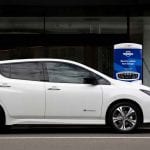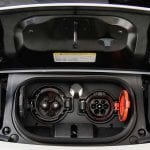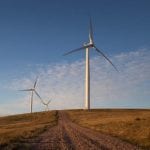Around The Web
Ruth Gates obituary
Ruth Gates, who has died aged 56 of complications following an operation, pioneered research into the breeding of “super corals” that are able to withstand rising sea temperatures resulting from global warming. Her work examined the traits that make some corals better survivors than others – with the aim of reinforcing those traits through selective breeding and then transplanting the more resilient corals on to damaged reefs. “I have watched some reefs disintegrate before my eyes,” she said in 2016. “I just can’t bear the idea that future generations may not experience a coral reef. The mission is to start solving the problem, not just to study it.”
Much of Ruth’s work was based at the Hawaii Institute of Marine Biology, where she had been director since 2015. Conducted with Madeleine van Oppen of the Australian Institute of Marine Science, her experiments were intricate and time-consuming, involving the collection of temperature-tolerant coral colonies from the field. Those individuals that did not bleach during natural bleaching events – when sea temperatures were high – then had their reproductive products collected in the laboratory after spawning. The offspring were raised and tested for improved temperature tolerance.
Continue reading...Meet the woman combing abandoned office buildings for unwanted treasures.
EU Market: Carbon hits 6-week high on eve of supply drought start
Pembrokeshire treasure hunter unearths Celtic chariot
Good to Earth: the Lavazza 2019 calendar – in pictures
Photographer Ami Vitale’s images of six nature art installations around the world aim to spread good news about efforts to protect the environment. The project was carried out in partnership with the United Nations Environment Programme
Continue reading...Queensland trial to power a remote farm with solar and battery “pod”
 Renewable power “pod” combining solar, battery storage and a generator to be trialled on a north-west Queensland farm, in bid to offer rural customers more reliable, affordable electricity.
Renewable power “pod” combining solar, battery storage and a generator to be trialled on a north-west Queensland farm, in bid to offer rural customers more reliable, affordable electricity.
The post Queensland trial to power a remote farm with solar and battery “pod” appeared first on RenewEconomy.
Nissan Leaf wins top Australian award for added range, vehicle-to-grid technology
 Nissan Leaf wins 'Green Innovation' award – a milestone for Nissan in gaining recognition for its popular EV in Australia.
Nissan Leaf wins 'Green Innovation' award – a milestone for Nissan in gaining recognition for its popular EV in Australia.
The post Nissan Leaf wins top Australian award for added range, vehicle-to-grid technology appeared first on RenewEconomy.
Tesla picks a side in the Australian electric vehicle plug war
 Recent announcements herald the end of the AC plug war in Australia, as well as potentially signalling the ending of the DC one too.
Recent announcements herald the end of the AC plug war in Australia, as well as potentially signalling the ending of the DC one too.
The post Tesla picks a side in the Australian electric vehicle plug war appeared first on RenewEconomy.
Climate change: Warming gas concentrations at new record high
Climate-heating greenhouse gases at record levels, says UN
Carbon dioxide, methane and nitrous oxide are far above pre-industrial levels
The main greenhouse gas emissions driving climate change have all reached record levels, the UN’s meteorology experts have reported.
Carbon dioxide, methane and nitrous oxide are now far above pre-industrial levels, with no sign of a reversal of the upward trend, a World Meteorological Organization report says.
Continue reading...Federal Politics: anti-terror deportation laws and Labor's energy policy
Renewables, NEG and batteries: unpacking Labor's energy policy
Growth hormones and gestation crates: the bacon we'll buy with a US trade deal
Trade deal would open door to meat containing banned growth promoters, from pigs kept in conditions banned in UK, industry leaders warn
The US meat lobby is “salivating” at the prospect of flooding the UK with bacon and pork produced using practices that would currently be illegal in the UK, a top food expert has warned.
Gestation crates and the chemical growth hormone ractopamine – both banned in the UK – are regularly used in the US pig industry, which achieves the lowest costs of production in the world. Any future trade deal which includes accepting US pork could potentially have a disastrous impact on the UK’s pig industry as well as diluting our welfare standards, say both industry and campaigners.
Continue reading...Tyres and synthetic clothes 'big cause of microplastic pollution'
Up to 32,000 tonnes of microplastics enter British waterways each year, says Friends of the Earth
Vehicle tyres and synthetic clothing are the two leading contributors to microplastic pollution from UK households, according to a new report from Friends of the Earth.
The report estimates that between 9,000 and 32,000 tonnes of microplastic pollution enter British waterways each year from just four sources. The two leading sources are tyre abrasion, with between 7,000 and 19,000 tonnes entering surface waters each year, and clothing.
Continue reading...Solar Insiders Podcast: Elon Musk’s catching mitt, battery storage everywhere
 Elon Musk’s giant catching mitt, new battery storage schemes, and the ongoing crackdown on crap solar.
Elon Musk’s giant catching mitt, new battery storage schemes, and the ongoing crackdown on crap solar.
The post Solar Insiders Podcast: Elon Musk’s catching mitt, battery storage everywhere appeared first on RenewEconomy.
Renewable energy boom – up to 60,000 new Australian jobs by 2030
 New analysis from The Australia Institute shows that 53% renewable energy capacity by 2030 would create between 18,000 and 59,000 direct jobs across the country.
New analysis from The Australia Institute shows that 53% renewable energy capacity by 2030 would create between 18,000 and 59,000 direct jobs across the country.
The post Renewable energy boom – up to 60,000 new Australian jobs by 2030 appeared first on RenewEconomy.
Energy Insiders Podcast: Ivor Frischknecht and the transition to 100% renewables
 Former ARENA CEO Ivor Frischknecht joins Energy Insiders to provide some fascinating insights into the politics of energy, and the transition to 100 per cent renewable energy.
Former ARENA CEO Ivor Frischknecht joins Energy Insiders to provide some fascinating insights into the politics of energy, and the transition to 100 per cent renewable energy.
The post Energy Insiders Podcast: Ivor Frischknecht and the transition to 100% renewables appeared first on RenewEconomy.
NA Markets: California and RGGI units rise ahead of Thanksgiving holiday
Victoria election a chance to catch the wave of renewables
 This summer, a huge swell of renewable energy investment is rippling across the globe, and Victoria is perfectly positioned to catch the wave.
This summer, a huge swell of renewable energy investment is rippling across the globe, and Victoria is perfectly positioned to catch the wave.
The post Victoria election a chance to catch the wave of renewables appeared first on RenewEconomy.
ALP battery subsidy could save $100m a year, and reverse auctions will also deliver cheaper energy
 The ALP energy policy on battery storage and reverse auctions is exactly what I would have designed. Here is why.
The ALP energy policy on battery storage and reverse auctions is exactly what I would have designed. Here is why.
The post ALP battery subsidy could save $100m a year, and reverse auctions will also deliver cheaper energy appeared first on RenewEconomy.



